Blame It - Learn Drums, Vocals, Music
Christopher “Deep” Henderson is a newly-risen star within the league of hit music producers. Henderson earned the nickname “Deep” for his thoughtful lyricism, but the music production on “Blame It,” Jamie Foxx’s latest Juggernaut hit, shows clearly Deep’s musical insight and wisdom extending far beyond his lyrical talents. The complex chord progressions and soulful melodic bends throughout Blame It, combined with its elegant evolution of every track, show not only Deep’s stellar compositional skill, but a tireless work ethic plus an obsession to detail verging on the pathological. Once Hit Talk had a chance to carefully analyze the impressive production gracing Blame It, we understood how this relatively unknown music producer was suddenly catapulted into an all-star lineup of hit makers including Just Blaze, Timbaland, Tricky, and others on Foxx’s album, Intuition. Since this is our most indepth Hit Report yet, complete with audio, multiple step-by-step instructions, and more detailed illustrations than ever before, we’re giving away an extended online preview. If you dig the preview, you’ll absolutely love the full Hit Report - This is one you don’t wanna miss!
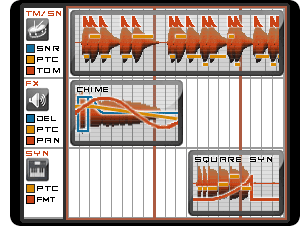 |

Track Detail Preview: Blame It’s Introduction
Where we’ve kicked off so many reports with our Frequency Separation Map, this time we provide a sneak preview of the Blame It Track Detail Map. The Track Detail Map is Hit Talk’s most knowledge-packed product, containing a wealth of production information with the convenience of seeing all production elements track-by-track, in relation to one another. Shown above right are the first 2 1/2 bars of Blame It’s introduction with three tracks in illustration. First, the tom/snare track illustrates pitch in yellow, flagging tom and snare hits in red and blue. Respectively, the snare hits occur later in the song, and hence aren’t shown here. Second, the fx track plots the delay, pitch and pan of the chime effect that occurs at the very beginning of the song. And third, the syn track plots the formant and pitch of the song’s bending square synth.
First impressions are crucial and, naturally, a great introduction of a song should swiftly communicate: “This is a hit!” This is exactly what happens in the introduction of Blame It. Here lies an extremely important lesson for aspiring producers. A weak song introduction is the quickest way to get your beats thrown out by someone who might be able to pay you for them. If the introduction is careless or overly repetitive, no one will listen past 15 seconds. That’s why the beginning bars of the first song on your website or CD must contain the catchiest, most alluring, most painstakingly-produced introduction you’re capable of creating. There are close to 20 tracks sculpting Blame It’s grabbing 8-bar introduction. We cover the most prominent of these introduction tracks in the complete Track Detail Map provided in the full Hit Report, allowing for indepth study of Blame It’s production secrets. Now, let’s get into those details provided in this extended preview. First, on the tom/snare track (tm/sn), you can see that the tuned toms (flagged in red) begin on the 4th 16th note of bar 1. All the toms are tuned with precision, forming their own evolving percussive melody. The toms are tuned just sharp of G and C, with occasional variations in the rhythm and melody as the beat evolves. The percussion’s precise tuning compliments perfectly the auto-tuned lead and backup vocals. With this wise choice in production, Deep demonstrates the importance of establishing consistent themes throughout the song’s evolution.
Let’s discuss how to replicate the 3 tracks we’ve illustrated above
On the very first beat of Blame It, you hear the panning effect we’ve labeled “chime” in the fx channel of the Track Detail Map preview, above. To produce an effect like the Blame It chime, you can start with a recording of a struck bell or wine glass. Dropping the pitch of the sampled recording by a 5th or more will draw out the shimmering, metallic overtones you hear in Blame It’s version. Many bells or chimes have a short sustain, lasting only a second or two, and this chime is far longer. Most samplers, such as Reason’s NNXT, or the E-Mu Emulator-X2 allow you to loop and extend the bell’s sustain quite easily. In this fashion, you can achieve an extended, tailored release similar to what you hear in Blame It. As we’ve illustrated above, the sample is processed with pitch and pan modulations, panning left first, then right using an autopan to carve out a slow sine-wave curve. The blue graphic drawn over the chime’s waveform shows an 8th note delay reflection (the 2nd vertical blue line), a low delay feedback setting (the curved tail), and then shows the delay lasting the duration of the chime’s playback. The pitch curve is also slightly convex, letting the chime sustain for a few 16th notes at its starting pitch, before dropping slowly. The chime performs the same function as a crash cymbal throughout the rest of the song, faithfully marking the beginning of each new section. This creative production embellishment is paramount to capturing a listener’s attention. In the introduction, the chime sets the mood and is then joined with stirring strings and synths, forming a memorable introduction. We reveal how the complete 8 bars of the introduction are assembled in our full Hit Report, available for purchase below. For now, let’s take a close look at how the square synth can be reproduced.
Looking at the square synth in the Track Detail Map preview, you’ll see we’ve plotted an increase in formant. An efficient two-oscillator synth like Reason’s Malstrom will do this job perfectly. In the above graphic, we’ve set the oscillators to a combination of sine and square. We’ve routed both oscillators through the “Filter B” section which processes them with a comb filter. We’ve set the comb filter resonance to 20, and the frequency to 100. The comb filter perfects this sound by adding a gentle treble edge to the sine/square timbre. Finally, in the mod section, we’ve set the “shift” mod rate to 25. Shift is the Malstrom’s formant control. Having made this adjustment, we can now control the formant using the mod wheel. Nudging the Malstrom’s shift up using the mod wheel puts the finishing touch on an unmistakable reproduction of Blame It’s square synth.
Vocal Production Preview
Deep’s vocal production in Blame It is dizzyingly complex. While Deep uses multiple tracks to create harmonies, as well as backup vocal responses to the lead vocal track, we’re going to focus on his use of Antares Auto-tune. Auto-tune is the dramatic pitch correction effect used by dozens of performers in the genres of Hip Hop, RnB, and even Rap. It’s a controversial effect; Cher gave it a bad name. But, while over-doing Auto-tune can make a vocal line sound artificial and cliché, judicious use of Auto-tune can perfectly convey the soulfullness of R&B. Likewise, Auto-tune works perfectly with Blame It. The song boasts a clean, finely tuned production, and Deep uses conspicuous, yet tasteful Auto-tune settings over the voices of Foxx and T-Pain. The result is a subtle robotic vibe that jives perfectly with the pitch-bending synth accompaniment, and the precisely-tuned percussive elements.
While you can use most VST host software successfully with Auto-tune, we’ve chosen Mackie Tracktion to illustrate our steps because it allows the producer to control Auto-tune via midi - a function not all hosts are capable of. Since Tracktion is not a standardized VST host software, combining Tracktion and Auto-tune is tricky business, but we’ll explain the pitfalls and fixes. On the whole, since it can trigger Auto-tune via midi, using Tracktion with Auto-tune has distinct advantages. In our full Hit Report below, we include step-by-step audio examples and an expanded 6-step discussion of Blame It’s vocal production.
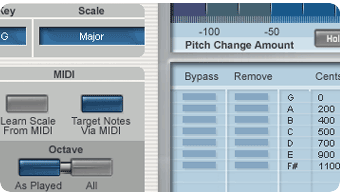 Step 1 – Set Auto-tune’s Input and Scale
Step 1 – Set Auto-tune’s Input and Scale
After you’ve loaded Auto-tune on your vocal channel (which, in Tracktion, means right-clicking the filter box to the right of the desired track and selecting “replace filter”, then selecting Auto-tune), make sure the input voice at the top/right of Auto-tune is set to male/tenor. Next, pick a key and scale. At left, we’ve picked G major, which might sound like an odd choice since Blame It is founded on a B, C chord progression. The reason for picking G major is because it contains all the notes of the lead vocal melody, and nothing in between. Thus, Auto-tune will make its adjustments without any wrong notes.
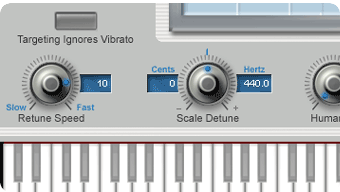 Step 2 – Set Auto-tune’s Retune Speed
Step 2 – Set Auto-tune’s Retune Speed
The retune speed is an important setting that determines how dramatic the effect of Auto-tune will be. Retune sets the number of milliseconds it takes to tune automatically from one note of the scale to the next. Hence, dramatic effects come from fast settings. Blame It uses a relatively fast retune speed between 20 and 10ms. At slower speeds, the characteristic robotic sound of Auto-tune becomes less discreet and less noticeable. The settings we just explained create pitch modulations as heard in Blame It’s verses.
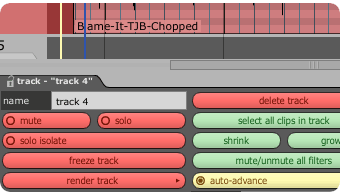 Step 3 - Render Before Final Mixdown
Step 3 - Render Before Final Mixdown
A hazard of combining Tracktion and Autotune, is Tracktion’s inability to export an auto-tuned track during the final mixdown. To work around this, you’ll have to use the red “render track” button shown at left, creating a bounce of your auto-tuned vocals. Although inconvenient, as long as you create multiple versions of your project, saving them before you make any irreversible changes, you have nothing to worry about. And, of course, it’s wise practice to save frequently, so make a habit of it. Since a lead vocal is always up front in the mix, Deep’s dramatic chop-and-retune is a bold move, but fans, charts and critics will all attest to its unequivocal success.
There’s a lot more tricks and techniques revealed in our Blame It Hit Report!
From start to finish, Blame It is flawlessly produced: it’s full of innovative technique, its instrumentation contains a multifaceted array of addictive rhythmic and melodic symmetries, plus its song arrangement boasts a painstakingly detailed build and evolution. Now, with a Hype Williams video that includes cameos from Jake Gyllenhaal, Forest Whitaker, Ron Howard, and Samuel L. Jackson, this stellar producer is sure to command the respect he truly deserves. Will he ever be as renowned as Timbaland? We’re not sure. But we are sure of this: Christopher “Deep” Henderson really… is… deep.
| Order the full “Blame It” Hit Report & Get it all… | |
 Blame It Song Format Map! (View All) Blame It Song Format Map! (View All) Blame It Frequency Separation Map! (View All) Blame It Frequency Separation Map! (View All) Blame It Song Arrangement Map! (View All) Blame It Song Arrangement Map! (View All) Blame It Groove Analysis Map! (View All) Blame It Groove Analysis Map! (View All) Blame It Chord Progression Map! (View All) Blame It Chord Progression Map! (View All) Blame It Track Detail Map! (View All) Blame It Track Detail Map! (View All) Blame It Song Arrangement Step-by-Step Report! Blame It Song Arrangement Step-by-Step Report! Blame It Vocal Production Step-by-Step Report! Blame It Vocal Production Step-by-Step Report! Blame It Song Introduction Production Report! Blame It Song Introduction Production Report! Blame It Mix & Frequency Separation Report! Blame It Mix & Frequency Separation Report! Blame It Glide Synth Step-by-Step Report! Blame It Glide Synth Step-by-Step Report! Blame It Music Production Reports! Blame It Music Production Reports! Blame It Hook Production Reports! Blame It Hook Production Reports! Blame It Effects Reports! Blame It Effects Reports! Blame It Synth Report! Blame It Synth Report! Super Bonus: VIPKIT#21, 153 Samples, $30 value! Super Bonus: VIPKIT#21, 153 Samples, $30 value! |
|
| Enhance Your Music Production Skills Today! |
|









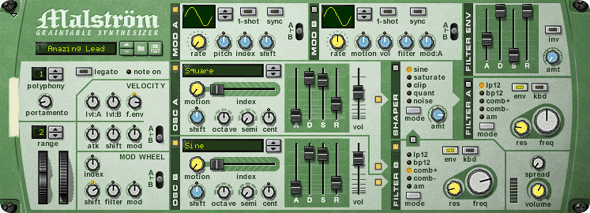
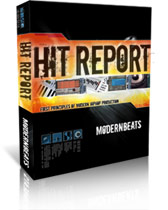
 GET 20% OFF COUPON INSTANTLY W/ SIGN-UP!
GET 20% OFF COUPON INSTANTLY W/ SIGN-UP!
 Check Out Hot Artists & Music Producers discovered through Song Submit!
Check Out Hot Artists & Music Producers discovered through Song Submit!



im an aspiring music producer i jus wanted to know do you have to have the expensive equipment for a production like the jaime foxx blame it or is it the mixing and mastering cuz i have unique samples and i have a lot of work but it dont sound as clear i was thinking me bein a producer i need to learn the mixing auto tuning of the samples in that its not just putting sounds together
What am i doing wrong with my music?
Hi Toine,
While you don’t necessarily need to spend a fortune, you can bet that Deep’s gear budget is large. Much of it, as you mention, has to do with the mix and master, and yeah - it takes gear. You need 1) quality sounds (sampled sounds, or quality recording gear and recording space to make your own quality sounds,) 2) quality mastering plugins or equipment, then 3) a quality monitoring setup. You can think of gear in those three stages.
Some amateur songwriters and producers spend a lot of time creating, then when they get a product they’re confident with, they send their production (as separate tracks) to an independent studio to be mastered. - like Audiobay
Might be worth a shot. We cover this more in-depth in Hit Theory Hope that helps some.
Yung Cage,
Maybe you’re not doing anything wrong with your music. Keep making it.
how do i start a hit. with the keys or with the drums
Hi, i’m a producer/songwriter and my question is this. Once I have a song in a presentable form what should be my next step other than copyrighting the song(s) i.e. how would I go about getting it placed. I have some ideas but i’de like to get as many suggestions as I can before I proceed. Thanks
Ice-p,
I doesn’t matter what you start with. Just keep the creative flow going, practice and enjoy making beats, and playin’ keys; wait for lightening to strike.
Hi Mezzy,
Great question. If you’ve read the above post about independent mastering studios, and you’re confident with your finished product, there are some helpful websites. A&R Hookup is a cool service.. Taxi and Broadjam are also solid avenues to getting your song placed. In fact, Modernbeats is running a membership/hip hop beats promo with Broadjam. Those are some ideas… You’re doing the right thing by asking around.
Ice-P that was great advice from Hit Talk because that is what it’s like lightning strikes and next thing you know you’ve written a hit song. Just gotta do it. Every producer is different sometimes you can make a drum beat and hear all the instruments that will fill the space the drums will tell you what to play. Then other times you might just have a dope melody and build chords and sounds around that, you might not even have words but the melody will tell you what to say. it’s a trip. Just remember the songs are always waiting to be written it doesn’t stop unless you stop. HTS thanks for the advice.
Hi Ice-P
Agreeing with the last comments, Also your doing the right thing by reading these Hit Reports, especially if you want to make song’s like you hear on the billboard. It really does not matter what Key the song is in or what instrument you start the song in, Your main focus should be making a solid Drum Rhythm, A Bass what falls nice into the pocket of that Rhythm, A catchy Melody , And a good Structure. Sometimes it just happens other times it can take a while but just get creative and keep focused on the job.
yes iam trying to get in the game of production however i know doing it independant brings you more money but i know hard wok comes along wiith that.. however iam trying to figure sould i use software beats or try to keep struggling tring to pay for these expensive keybords truefully this software sounds just like these same keybords, iam trying to at least get me five beats out there waiting on copyrights protection to come back oh.. is there any way i can get my music copyritten more faster if know of any websites that can probally help i will appreciate it
Can a recording be mastered in a home studio? And what programs are there that master? I heard that Audacity and Soundforge are good.
Hi Alfred,
You can Master your songs in a home studio if you have a good Acoustic treated room, and good Monitor Speakers. Logic, Cubase, Sonar, Are all good Programs to Master in, Waves Bundles and T-RackS are good Plug-ins to use to. Also try to listen to your Master Copy in a few different places on other speaker systems, That will help you get a overall Master that you like.
Hope that helps man.
Hey Keith,
You can copyright your songs online. I’m not sure of the exact website but if you go to google and do a search i’m sure your bound to find it. It might be copyright.gov but I know it’s a government website. You can upload alot of beats or whatever and pay for it right there and it doesn’t even cost that much.
Hi, I just caught wind of this great post. I thought I would answer the copyright question; just go to the library of congress web site and follow the instructions there. You can even upload your song on that site. It takes about 3 months (zzZZZ) for you to get your cert but that is where you want to start. The address is here.
Just another quick note: you don’t have to work so hard at designing the sound that is identified here as a chime. There is a synth bongo available on, I think, an 808 machine. If you use Reason, there is a free refill that contains the sound you are looking for. It is a spot on match for the sound used in Blame It. Go to:
http://youproduce.net/index.php?option=com_mtree&task=listcats&cat_id=8&Itemid=250
download the “All 5005 Synths and 222 effects” refill and load the patch “808_run” from the Thor patches -> mythor folder. See easy…
Hi Evo,
Thanks for those valuable comments. We try to provide “from scratch” recipes for sounds in the Hit Reports, but yeah - using a pre-sampled 808 hit is a lot easier than sampling your own recordings. Ah, but sampling your own recordings is so much fun! who can resist?
Oh yea, I do see your point. But I wanted to be as accurate as possible. The difference, to me at least, is trying to emulate a uniquely digital sound using analog samples… it really sounds like Deep used the 808 or some other hardware containing patches that sound like the drum machine. There are other elements in the song that are native to the 808 that suggest that the drum machine was used in the production and therefore validates the use of the 808 for learning how this track was put together. But by all means people, creating your work from scratch is not only fun but you learn to produce better sounds. Also it helps you build a product library that is yours and that can’t be refuted.
Agreed - the more ears the better; we try to make as few unproven conjectures about the production as possible, hence why we opted for basic sound design. Having said that, if we used the 808 more, we’d probably have gone that route to explain it… Thanks a lot for your contributions, Evo. We always welcome input on, and additions to, our analysis.
My mixes sound low and mid way of the speakers. I can’t seem to get them up higher. I tried summing, SSL racks and now I’m not having any hope. I tried stereo plugin and my mixes sound 1/2 way of the speaker height. Does anyone have any suggestions?
I mean the mixes that you guys do makes me what to cry man. I man I love the sound.
Yo L,
Hey, don’t lose hope. Do you mean that you’re not hearing enough treble? Are you able to use VST? One thing you might try is a channel strip plugin like the GAC-1 Golden Channel from Kjaerhus Audio. http://www.kjaerhusaudio.com/download.php. Try some of the GAC-1’s mastering presets on your master mix - hell try all the presets. You might get some clues as to what direction to take your mastering before you sum your mix. Let us know if any of that helps or makes sense.
Thanks for your reply. I like your article on “mAKE YOUR mixes wider than ever”. Yet how is that accomplished with panning as well. All I can say your intro track before entering in the website has full headphone and height in my monitor speakers. When I tried your article about “Make your mixes wider” the stereo image was noticable yet my sound came out 1/2 way of the speakers where as yours jumped me out of my seat. Talk about presence. Man i can’t stop listening to that track. I did notice when I press the mono on my mackie big knob i notice the stereo image drop and yet yours still sounds better than mines. Help
Our next round of tips will help you - they’ll be up over the next few days. If you haven’t already, you should sign up for the Hit-Talk email tips. Those should help. In the meantime, perhaps you could post (or email) some of your mixes for us to hear; that would make it easy for us to evaluate your material.
Hey, I’m loving this Hit Report, J. Foxx is one of my favorite artist, his album is great and he’s a triple threat, I listen to it a lot! Deep is definitely on my radar now…
A question, I know the kits are urban, but are we ever gonna see reports from different genres like pop produced with MB kits or will they be mainly rap/rnb?
I’ve been listening to the Hard Candy cd- consistently- for weeks…! Its gotta be the best/unique album I’ve heard in years (playback value), the production is fantastic- grade A.
Although, its release was a year ago I’m still hypnotized by both the vocal and music production for this album. I read the digital insert and found out which studio’s they used and through previous reading and play with my Mac, I recognized several things The Neptune’s used to create their contributions.
However, I would like to find more material/ production notes on The Neptunes, Timbaland and Madonna’s,etc… contributions. A studio video would be great! but i’ll settle for a text or article. haha…
Thanks HT…
Hey Terrance,
Yeah, we’re mainly about Rap/Hip Hop/RnB, so we’re stickin to our roots for now. We go with what’s current, but Neptunes and Timbaland are definitely on the list of must-haves. Also Swizz, Madlib, Danja (and hopefully something from the J-Dilla catalogue.) Ultimately, we’re trying to hit the songs our listeners want.
Having said that, we’re not at all averse to covering Pop. At one point, we were thinking about covering “Piece of Me” by Britney - really hot production. We’re not just sticking with songs that are produced with ModernBeats sounds (the Single Ladies kick was a coincidence; we just loved the production). Hard Candy has some great songs; Madonna is always backed by extremely creative production. Anyway, Terrance, glad to have your suggestions. We rely on readers (and on the charts, of course) to steer our content.
does anyone know how to do the skipping effect in the song blame it
We do (: It’s in the full report.
Its cool, I can dig it… I’ll get there one day.
yea, the J-Dilla MB kits would be super dope. I dig the vinyl as well (i miss the pete rock, rza era… Danja is also on my study list.
Britney’s “Piece of Me” is good. But I like the groove and definitely the synth’s found in “Womanizer” also in “Kill the lights” <<(also produced by danja ;)
if you could take a look at that real quick and just give me a tip on the synth, it will expand what i have learned from the several full hit reports i’ve purchased…
Thanx HT
ps. @Nic
you should definitely get the J. Foxx Blame it - Hit Report, it revealed some things I didn’t realize about hit song progression/building
Welcome, Terrance. We’ll check out “Kill the Lights” when we get a chance
Thanks for peeping that for me. Any hint as to what the next HR will be- thats being worked on? lol
Yea and while you’re at it, look at that Miles away for me. just kidding i’m not gonna push it.
Thanks, i’ll be ever so vigilant for your advise as well as the next issue of HR…
ok cool thanks guys on the info I will def. get this report so I can figure out some new techniques…. thanks
Yeah, in Kill The Lights, the bass is saw-based, maybe layered with a square, sounds over-driven and low-passed… some of the higher pitched synths are bare square wave… Danja is consistently awesome; Kill the Lights is top-notch production, of course. Like Kill the Lights, the track in the new Hit Report is melody-driven and synth-intensive, we can tell you that. ;)
Cool. Thanks,
I’ve been trying several things like that with kontakt 3 and kore 2.
i’m finding layered synth is great when switching presets but hell on tuning properly (especially lower octaves layered with higher pitches) I read the report on the Moog. any tips on tuning with the ones i mentioned coming?
Yeah that next HR will be bangin I know, I hope yall doing something from The Dream new album soon.
We’ll definitely be covering NI gear in the future. Thanks for that suggestion. Kore and Absynth are totally awesome. NI, can we get a free copy of Komplete? Thanks! xD
In response to Toine’s question whether an artist needs expensive gears as opposed to less expensive ones to carve and sculpt the ultimate musical piece. “Ultimate” lies in the musical talent of an artist regardless of gears’ worth in dollars. Mysto & Pizzi are two young music producers who cut the now famous “Who’s Watching Me” for GEICO commercial right in their very own home on their Open Labs Neko workstation. The Open Labs machine they own costs around $3,000.00 to 4,000.00. But, even $1,200.00 (or less) set up will do the job depending on your talent and musical endurance. (An expert fisherman who owns a less expensive fishing rod is likely to catch a lot more fish than a guy who rarely fishes and owns a fishing rod of higher expense.) Hope that helps.
which is the best technique for capturing high quality vocals?
(Mic techniques and voice production)
PLEASE don’t purchase a openlabs product .
you can’t return the product if you don’t like it . so make sure you check your options first.
you have the same VST and sound for a lot less .
Yo fat,
I take it you’re not in agreement with Greg. Yeah, I guess we’d say there are less expensive ways to produce than using an Open Labs Neko. It’s still an impressive-looking machine. You’re right though, fat, that if someone is going to spend 4 Gs on a single piece of hardware - they’d better do their homework.
Yo Vennant,
The best technique for capturing high quality vocals is to record using a high quality mic through a high quality signal chain in a high-quality recording environment. ;)
and don’t forget your pop filter.
can u check me out hit talk staff and give me some advice on what i can do 2 get better
http://www.myspace.com/jhitzmusic
JHitz, I liked the first track you have on your myspace page. I can tell you 1 thing I notice with the beat. It sounds like you have a lot of alias’ng going on in the song. I don’t know what you used for that track but turn your global mastering off. Use compression on only the tracks that need it and fill in the rest with some reverb or chorus. That would prevent the sounds from dropping out to match the frequencies the other tracks are creating.
wtz up, tanks 4 the great work. Pls i ll like to know what to do to my bass line to make it strong or heavy. I use FL.STUDIO 6.
Hey sogr,
You may want to sign up for the 10 email tips if you haven’t already. There’s some info in there about managing your bass frequencies. It’s not just about having a strong bassline, but also having well-managed bass frequencies.
hello,im just an underground music producer right here in tanzania,i want to ask this,what equipments are needed to make a song having a scratched chorus?do i need external dj scratching machine or?
Hi Sajo,
You’re never “just” an underground music producer. Good question. There are lots of ways to get scratch noise. Some scratch programs use turntable-style midi controllers (you use them like you’d use real turntables), programs like Torq… If you don’t have the right hardware/software, there are still tricks. Depending on what software you’re using, they might be right under your fingertips. Are you using software to produce?
Good discussion
In reference to mixing and mastering, you should have an acoustically treated mixing space before you do ANYTHING. In fact, my music improved 500% and I started licensing music and getting it placed in films as soon as I started recording and mixing in my acoustically treated studio. In fact, today I just wrote a blog post on how to acoustically treat your mixing space. There are pictures and everything there in the article.
Yo MB,
I don’t usually use headphones for anything except panning, setting LFO’s and quiet time. But, I’ve been hearing about the Doc’s headphones and was thinking about using em to get a more intimate accurate sound with my tracks…
I know I’m not supposed to use headphones to mix, so what is the big deal about these headphones other than the Doc’s stamp on em (and other quality i.e. $$$ headphones like em)?
thnx
Hey Terrance,
It’s surprising that there haven’t been more endorsements like the Dre headphones among celebrity producers, given the fact that nearly every label-signed guitarist has a signature model or at least a brand endorsement.
If you’re using any headphones to mix, yes use ‘em for quiet time, but make sure you’ve got a proper monitoring system to fall back on when you get into the nitty and gritty of mastering. And when you’re using monitors, you should follow fullbird’s advice above and make sure your room isn’t blowing your frequencies out of proportion.
One good thing about headphones is that they aren’t succeptible to interference from the room you’re in… You’ll pay a lot of money for flat-response studio headphones with good handling of bass frequencies, but they’re worth it if you need to use headphones often. Have you read that section of Hit Theory?
I will agree with the comment that headphones are not susceptible to the room acoustics or other anomalies, but I think using monitors over headphones will still give the best results.
If you must use them, I’ve heard from several pros that use the Sony MDR 7506s and say they are excellent. One of those folks is a mastering engineer and uses them quite often, but I don’t have the ear for that.
The one main problem I see with cans is they give a false sense of placement and most have bad bass response causing the mixer to use more than they should.
Even a minimally acoustically treated room (in my article http://www.fullbirdmusic.com/blog/2009/05/how-to-acoustically-treat-your-mixing-space/ , I wrote about treating my room with minimal materials with no bass traps for around $300) will give phenominally better results than headphones; and my room is even concrete walls and tile floors.
Good conversation here.
That is surprising, you may have just set the bar for a new trend…haha
I haven’t read the Hit Theory pdf since the Hit Reports came out. I guess I’ll back track. I’m stuck on the single ladies at the moment. Trying some new stuff with Battery & Omnisphere.
Check back soon…
thanks for the contributions, Fullbird. Yeah, if the monitors are correctly positioned and the room is treated, there’s definitely more “space.” Some DIY plastic garbage bin bass traps wouldn’t cost too much either… you could even stuff some garbage bags with insulation and fasten them to the back of your corner panels. Good article.
Yo Terrance,
You heard it here first! ;)
I want to be a great rapper like Dre, Xzibit and Eminem, and the rest so pls were will i start from?
I like to here from this site because you guys are grate in terms of this game
Underscored, we deal mainly with production. Rapping is a whole ‘nother skill set. But whatever else you do to get started rapping, we’d suggest printing off the lyrics of your favorite records, memorize them, and keep a journal of your rhymes that you write in every day… Any successful writers do the same thing. Journal all the time - even if you’re not feelin the flow, and you’re just writing down garbage, keep writing it down - don’t judge yourself at first, and don’t get discouraged. Just keep on writing…
I think one key to success is persistence. If you eat, sleep, breathe, and work your passion, things will happen for you.
One thing in common with those guys is that they used their craft of songwriting and rapping EVERY SINGLE DAY. How many notebooks do you think Em has filled with stuff that never got used? I don’t even want to know!
The key to any skill is doing it over and over and over again. Writing songs should be something that happens for you, not TO you. You’re in control of your success. Start with looking at how those guys got there - hard work, practice, and a LOT of persistence. Good luck!
hey! love the site, hit-talk, the beats, everything. i learn so much every time i dig a little more through the site. thanks so much!
one thing i’ve always been curious to do but have never seen much talk about is how to (or best practices) in creating my own pro quality samples or beats.
say i want some static off the radio, or to capture some other unique household hit. how do i get that great clean sounding, pro quality, high volume result consistantly?
i usually rely on bought beats (you guys are beyond awesome for that) or i just get ‘lucky’ with applying EQ and compression. However, when i get ‘lucky’ the final sound is great, but not usually what was intended.
Is there some ’standard’ pipeline to follow? or some common ‘production chain’ most people start with that usually gets the right high-end results? or does it really rely a lot on a great mic, great placement, great room.. etc.
just wondering.
Hey Luke,
I would say that in order to get high-quality samples, you NEED only 2 or 3 things:
1. a great performance (this means little or no ambient sound, eg. horns honking, babies crying, etc.)
2. a decent microphone
3. a decent recording interface
You can use a VERY inexpensive condensor (or dynamic, depending on the SPL of the sound source) to capture any sound. It just needs to be recorded cleanly and without any artifacts. Recording even your own household samples should be done at 24-bit at 48khz.
There is plenty of info on the internet about doing these things, give it a little search and see what you get. Good luck!
Hi Luke,
I would also say look into getting a good Mic Pre Amp, preferably one with pure class A pre amps.
Hey Luke,
We’d agree with what John and fullbirdmusic say. You should check out the mastering tip we posted recently. When it comes to applying EQ and compression, you can’t really rely on any fast ‘n’ ready settings. You’ve gotta get good monitors, and practice using your ears. That’s the best and only way to get good at EQ and compression.
Cheers,
HT
My field is really as a songwriter. Just wanted to know how to get into the business. I can write r&b and pop. I have some skills in hip-hop/rap lyrics but not that strong. I frequently find music online and write to it as well as just writing without music. Please tell me where to start. Thank you
Hi Charles,
You can check out sites like Song Submit. There are always calls for submissions - people looking for independent beats and songs. The trick is to write your song, and then get it represented legally, so that’s part of what sites like Song Submit do… the good thing about song submit though is that you get coupons to spend on the MB website if you don’t win, plus you only have to spend small amounts to enter the competitions as opposed to paying large sums for memberships at sites like Taxi.
Main thing is - keep writing… keep trying to improve your style. And of course, always put your best foot forward. Quality, originality and hard work.
I wanna make an international pop album. I have composed music,songs & even have a video making idea. How can I make my dream happen?
Hi there, I am an upcoming producer from Zambia in Africa i really appreciate this website. I wud just like to know if you have any tips for using the mixer in FL Studio from 6 to onwards. Secondly am working on a spanish HipHop beat. I had a good guitarist make tha instrumental for it whats remaining is the drums do u hav any advice?
I do hip hop production, and am from Detroit. It’s a fickle market for producers here, being that we’re not New York, LA. or Down South. How would someone such as myself get my music heard. Some of these beat sites charge monthly fees or take a Percentage of the money if you sell a beat. Is it better to give beats away that’s copywritten. I want some big names for some of the beats I make. I truly think they have mass appeal.
Yo Mr. Bridgeman,
Don’t even think of Detroit as a disadvantage. Fact is you can represent your beats from anywhere you want. Find out who are the right people to reach out to, and reach out to them. Detroit has a great scene, it’s up to you to make the most of it, just go hard and represent it best youpossibly can.
Having said that, getting your beat listened to, having it placed in a song, and getting it heard publicly requires the proper copyright. You could try some of the ModernBeats Song Submit listings. They don’t require expensive up front fees, and you get a coupon ;) Song submit makes the connection for you, but doesn’t charge any percentage fees. You have to make sure your beat is damn good to get it placed, of course, but that should go without saying.
Yo nkatu,
Good to be hearing from Zambia!
In FL studio 6? Well for any mixer, you need to have a good stereo spread. So make sure your tracks are all panned to appropriate places in the stereo field. The FL Studio 8 mixer has a really intuitive channel layout on the right side of the mixer. All your mixing and editing can go through that console. You can put compressors, reverbs, or any effect in the effect slots, then just use the channel EQ (or another EQ of your choice) to sculpt the channel’s frequency response as needed.
a lot of people out there want to copyright each individual beat they make. good idea, bad implementation. copyrighted songs can cost upwards of 30 dollars a piece to copyright. it may be smarter to collect a bunch of your beats and compile them on a cd and get the entire works copyrighted. instead of 10 tracks @ 30 bucks a pop ($300), you can copyright the works together ($30) and still own full copyrights on each individual tracks.
very interesting.how long will it take to complet the course
It’s never-ending, Otim ;)
What are the chord progressions used in hip hop,rnb and pop music. u guys are great keep it up.
I am an upcoming artist/producer and i have done r&b, Afro-hip hop and Kapuka styles, ma guys are saying this songs are hit but the way to present them to the market is stressful to me. I need you guys to help me get this stuffs to the market. How can i start this?
Why don’t you have an answer to ma query?
Yo Josh,
We did send an email to your email address. Maybe check your spam folder if you didn’t receive it.
Best,
HT
I have a lot that I want to know about equing, but to keep it short, do you know of any sites that would help? My mixes sounds close, but not good enough. Is there someone that can give me some advice on how to get that sonic quality with a big sound?
@Martarius
You can try:
https://www.modernbeats.com/hit-talk/mastering-audio-with-t-racks-3/
And the Timbaland Hit Report in particular has some very good advice with regard to EQing:
https://www.modernbeats.com/hit-talk/timbaland-morning-after-dark-learn-drum-production/
I just got a good tutorial video for Christmas by Dave Aaron (works with Snoop, Prince, Kurupt and more). It’s called ‘Hip Hop Mixing’. You basically get to watch him mix a Kurupt track from start to finish. Lots of good info - i need to watch it again. Personally, I’ve been really pushing hard lately to learn in this area myself. What I’ve found to really make your kick and bass bang is to EQ everything else out of those sub frequencies. Ex: your bass will usually be right around 125.. so on your kick and on every other track, EQ a big dip right at 125. Then let your Kick take up all those sub frequencies below 125 (for that big sub bang).. and then find where the Kick hits hard (clicks hard) higher up in the mix.. like between 2-7K - and pump that up a few db’s. Dave has some great advice in this area.. but i’ve found that if you have a fat mix (a lot of instruments or layers of instruments) that EQing all the ‘junk’ out.. or making them as thin as possible will really ‘clean’ up the mix (allow you to hear each part more easily). While if you have a thinner mix (starting with thinner sounds) you can bump up (fatten) certain sounds with the EQ and still maintain clarity. That’s one big thing I learned from the Aron video - I couldn’t believe how thin some of his starting sounds were. (almost bad) - yet when they all came together they sounded awesome. One other way I’ve found to get that bigger, louder final result is to render out several tracks.. like drums, instruments, vocals seperate.. and then master them back together. that way you can kinda tweak levels and put the vocals out in front a bit more. Or even use side-chain compressing.. to duck the instruments out of the way a few db when the vocals are hitting. That way the instruments can be turned up louder and the vocals don’t get drowned out. So if you EQ your instruments out of the way of your drums (specifically kick).. and then you side-chain the final instrument mix out of the way of the final vocal mix. (and then appropriately add a mastering limiter on all that). you should come up with a final mastered product that is still quality sonically, while loud and bang’n. While this will give you better results then 90% of your local Mastering Studios.. you just can’t beat big budget Mastering - they really know what they’re doing. but you should be able to get real close. Oh and i’m still totally learning all this stuff myself - so if you get any other great info - let me know! late
i wanna start producing,but i lack da soft ware and equipment.